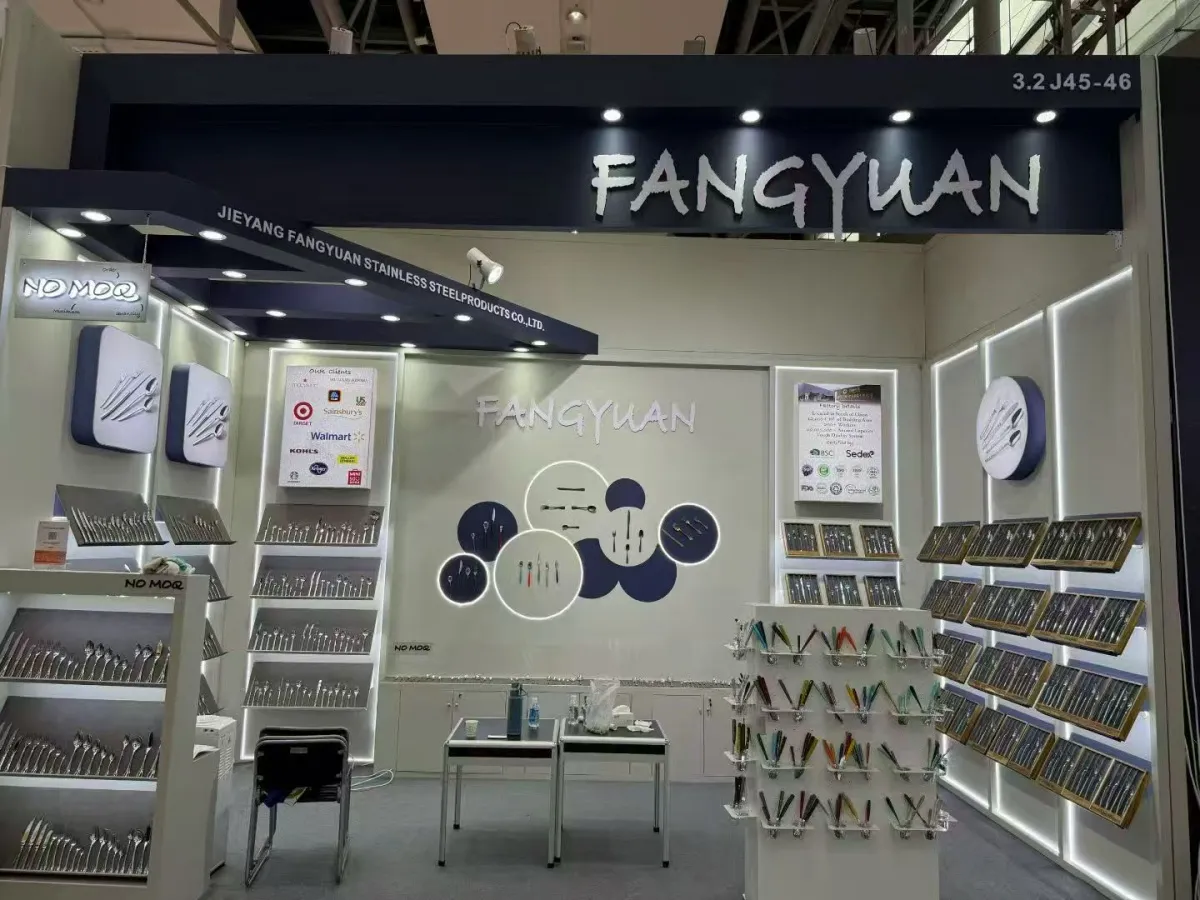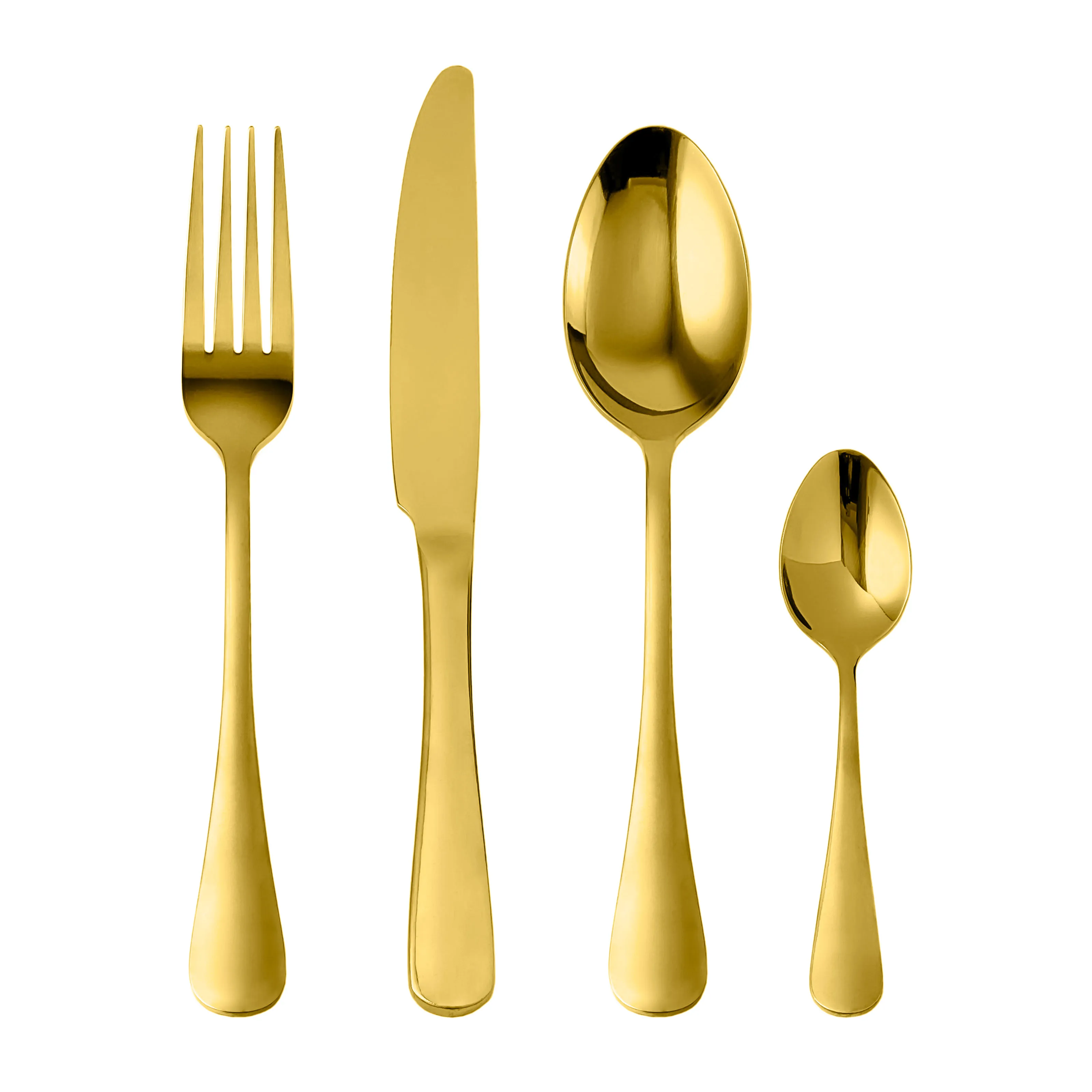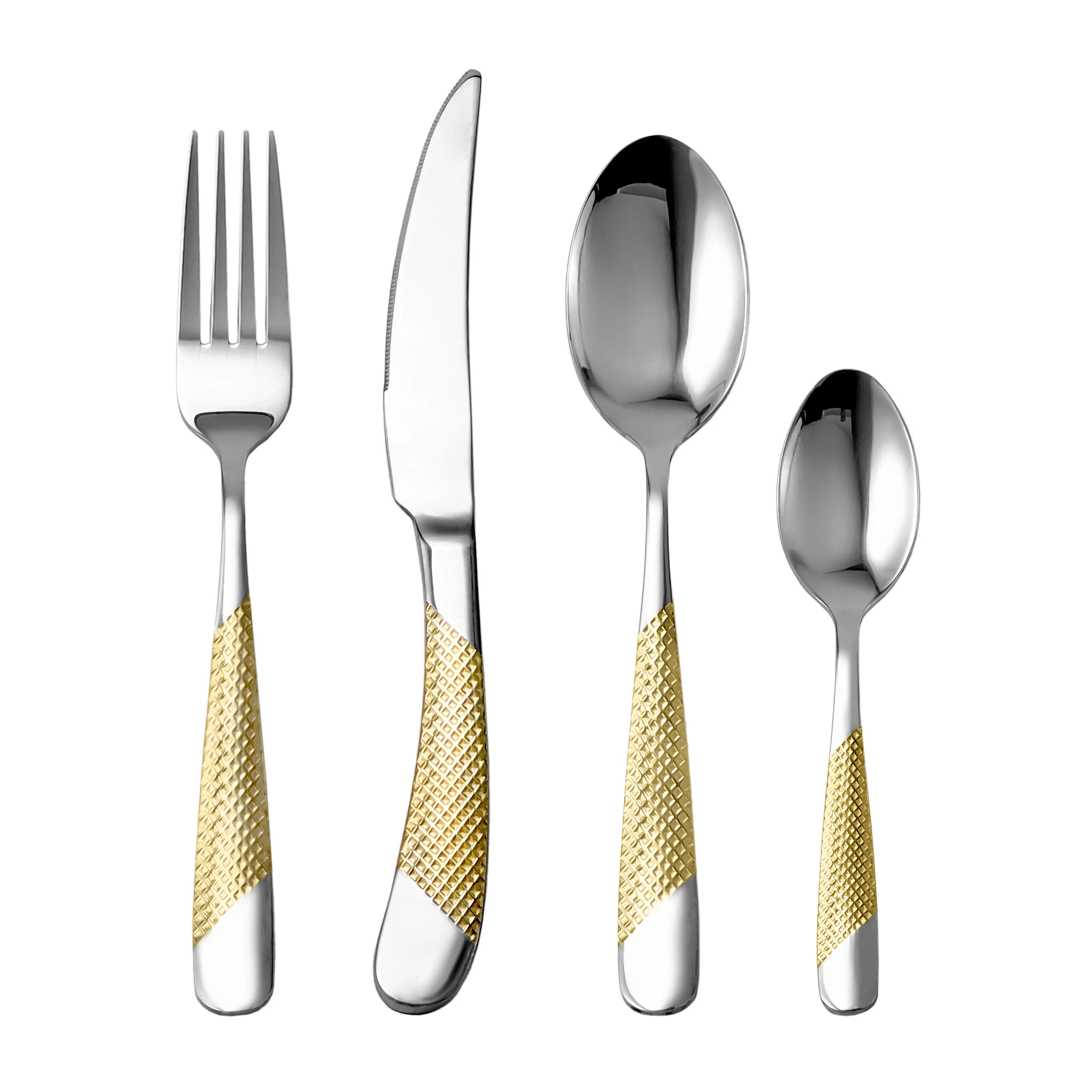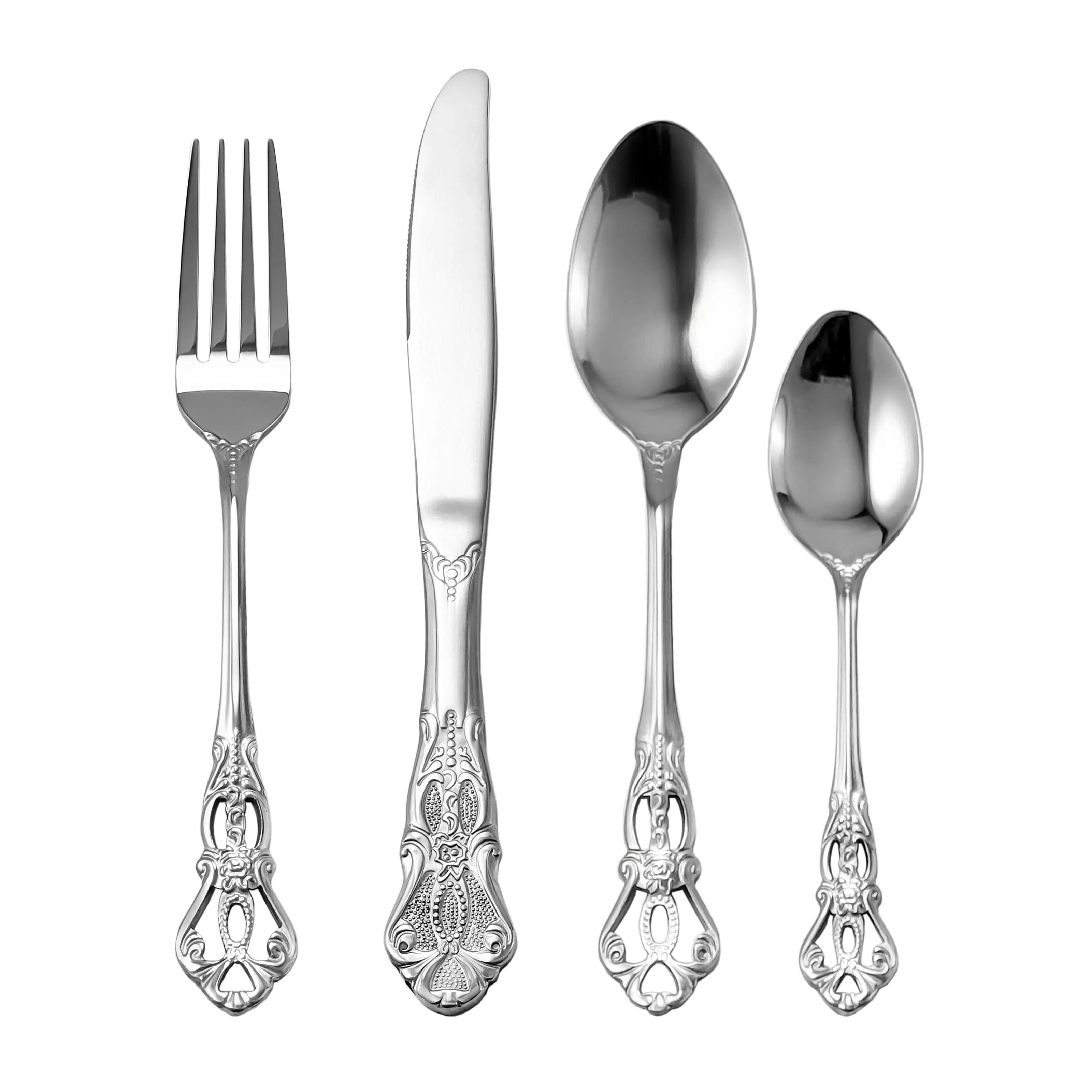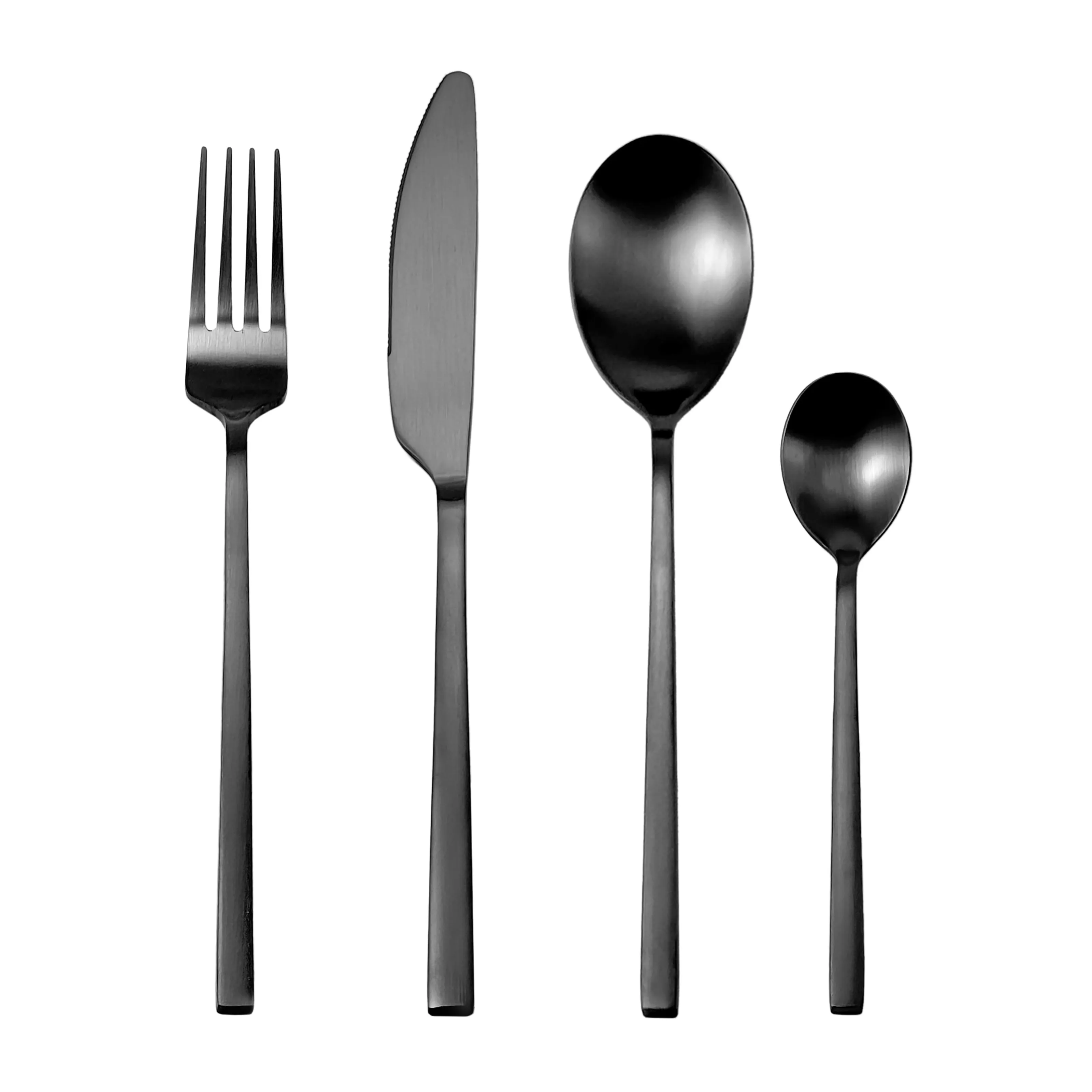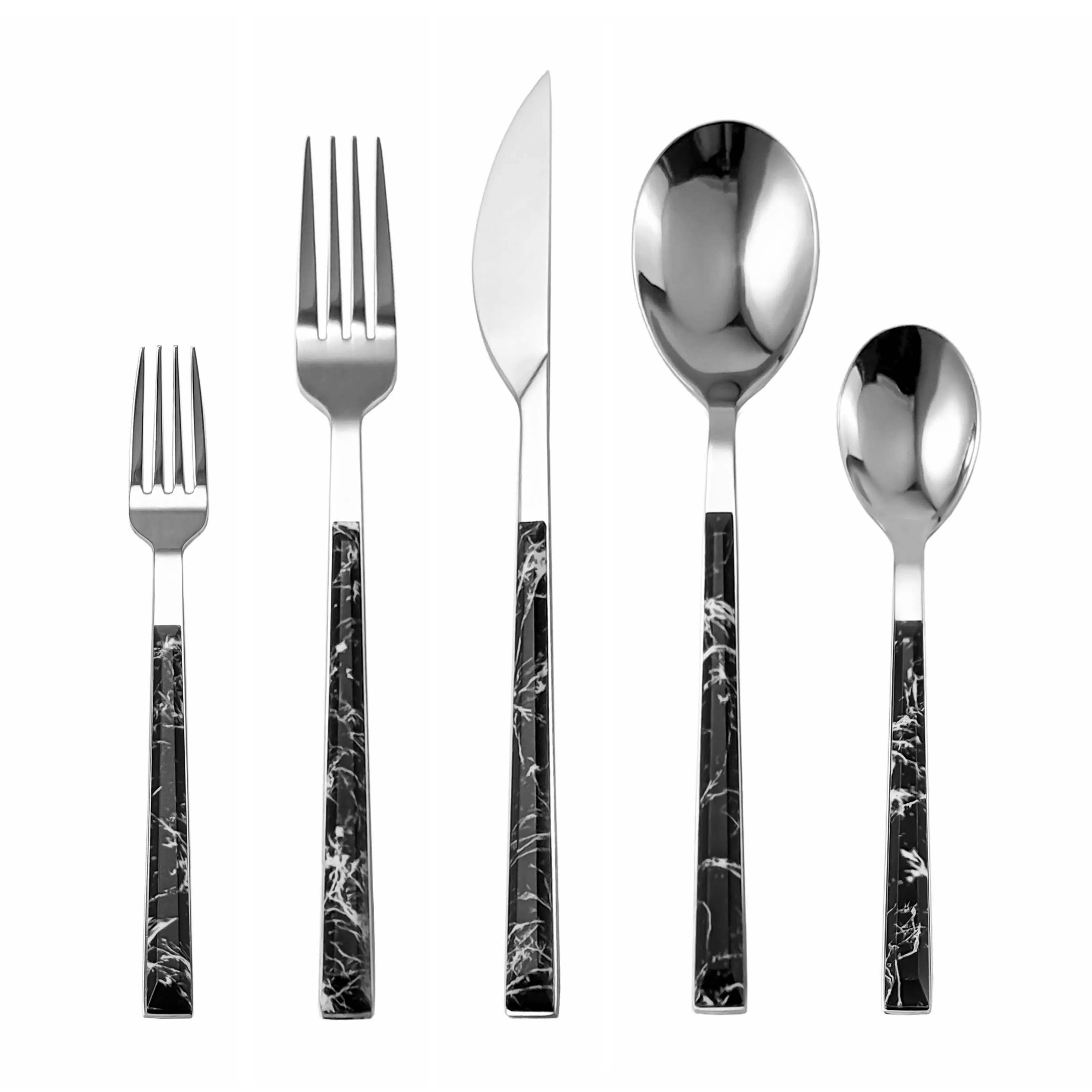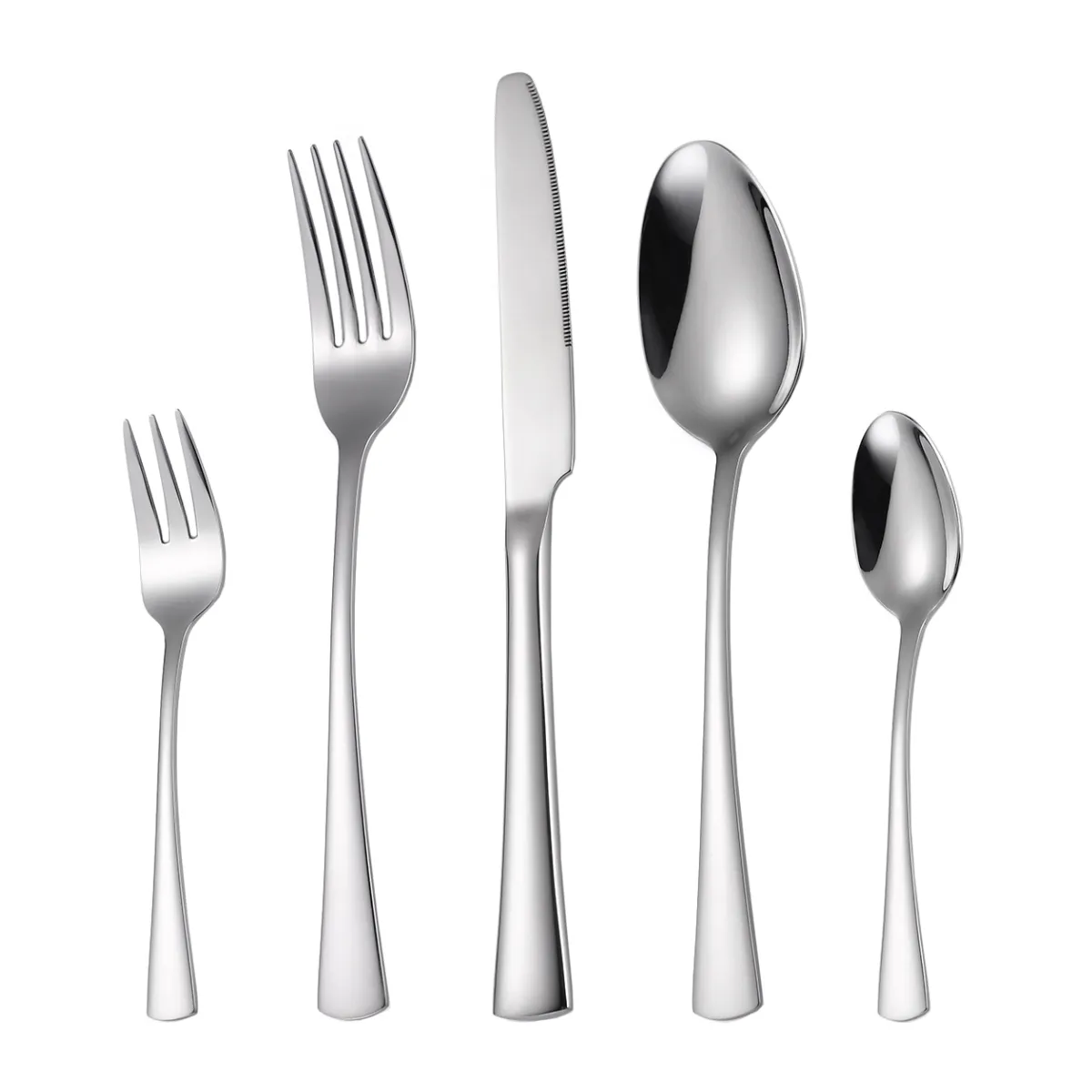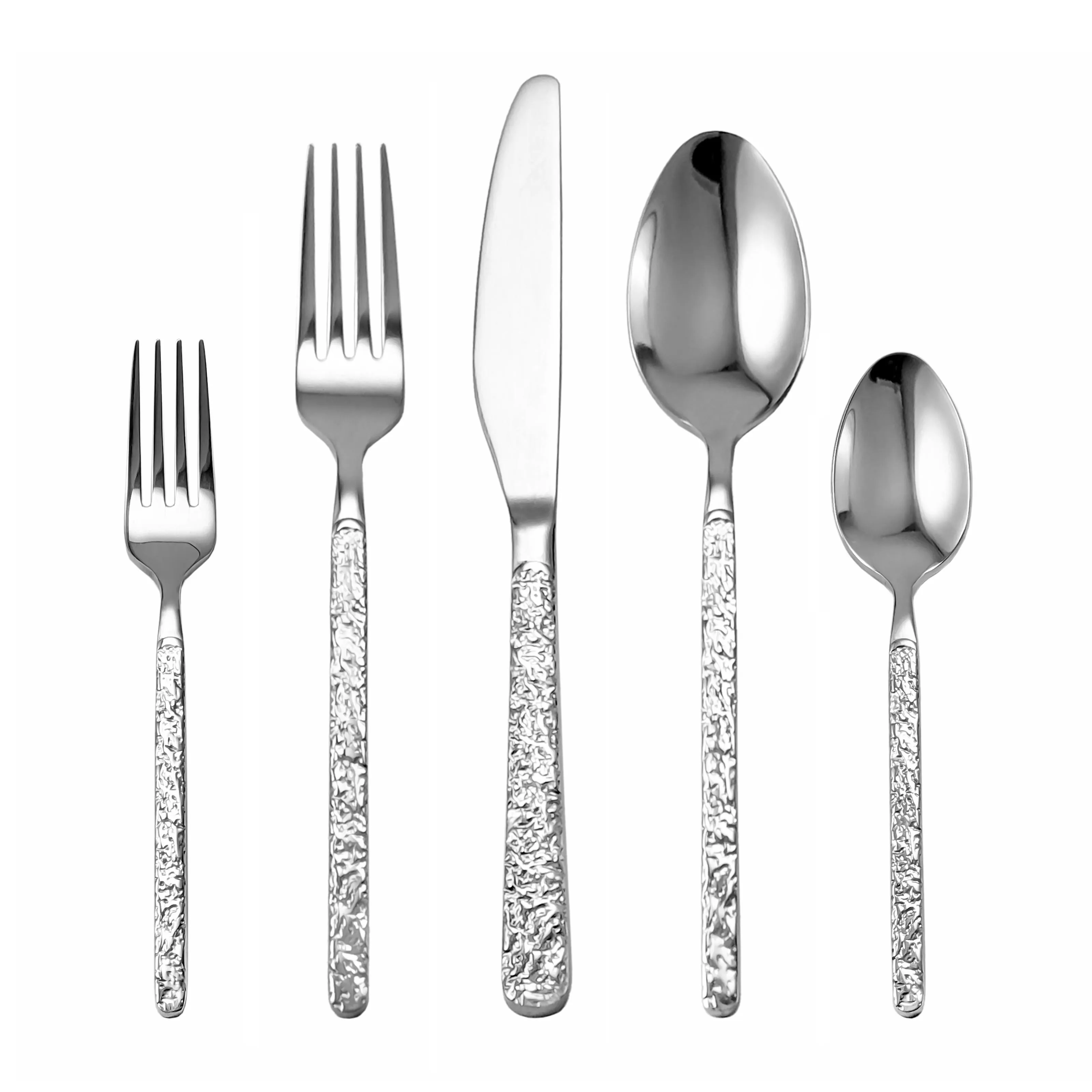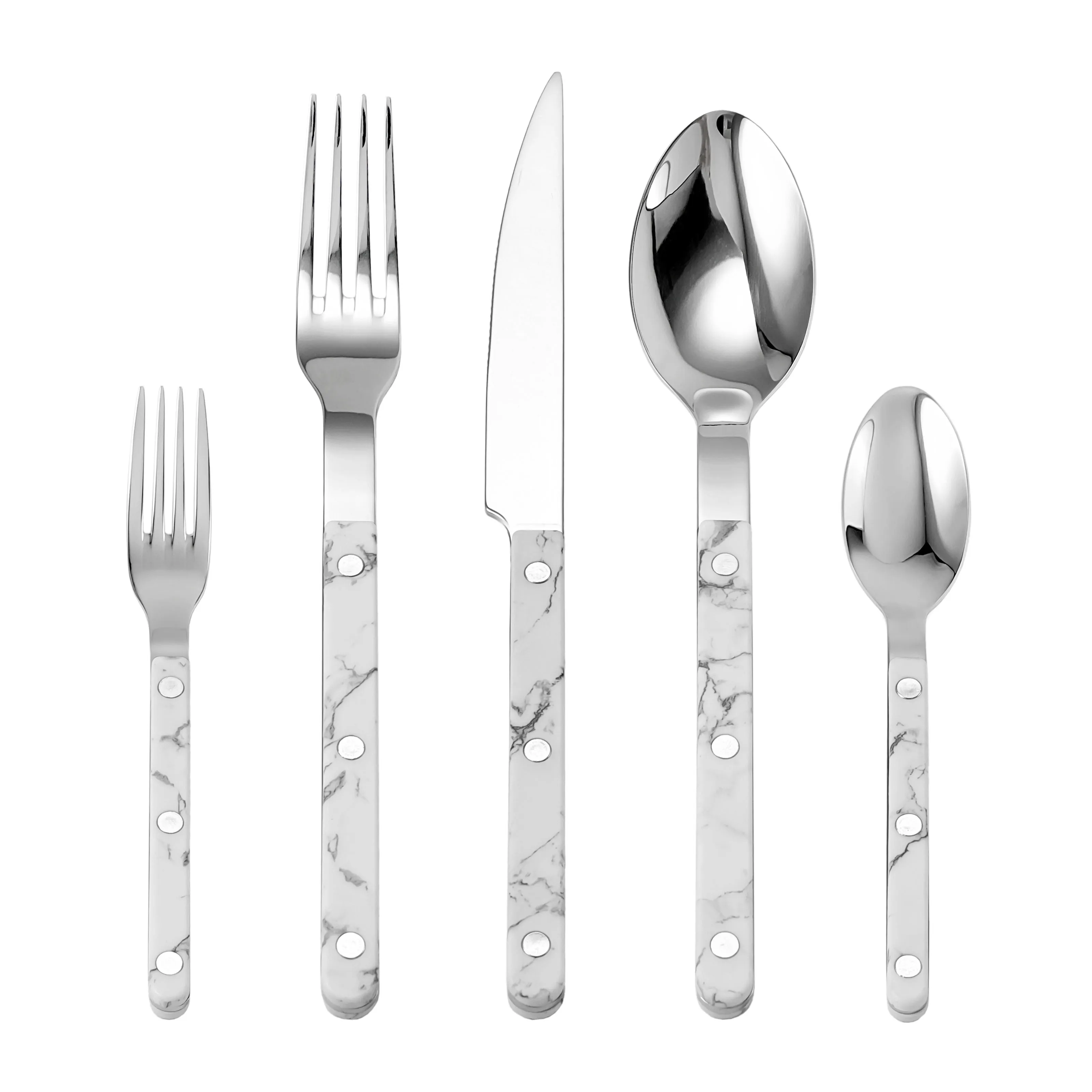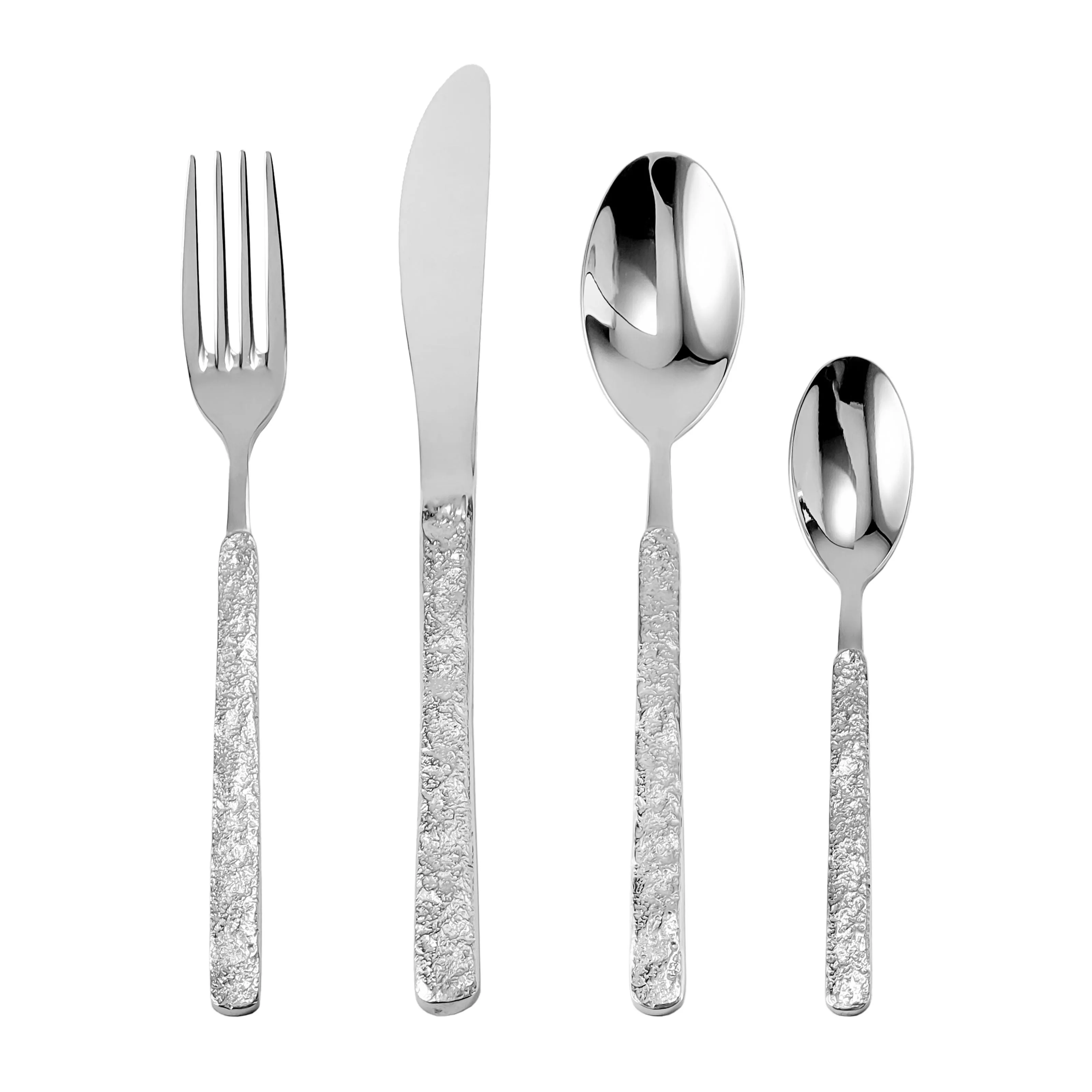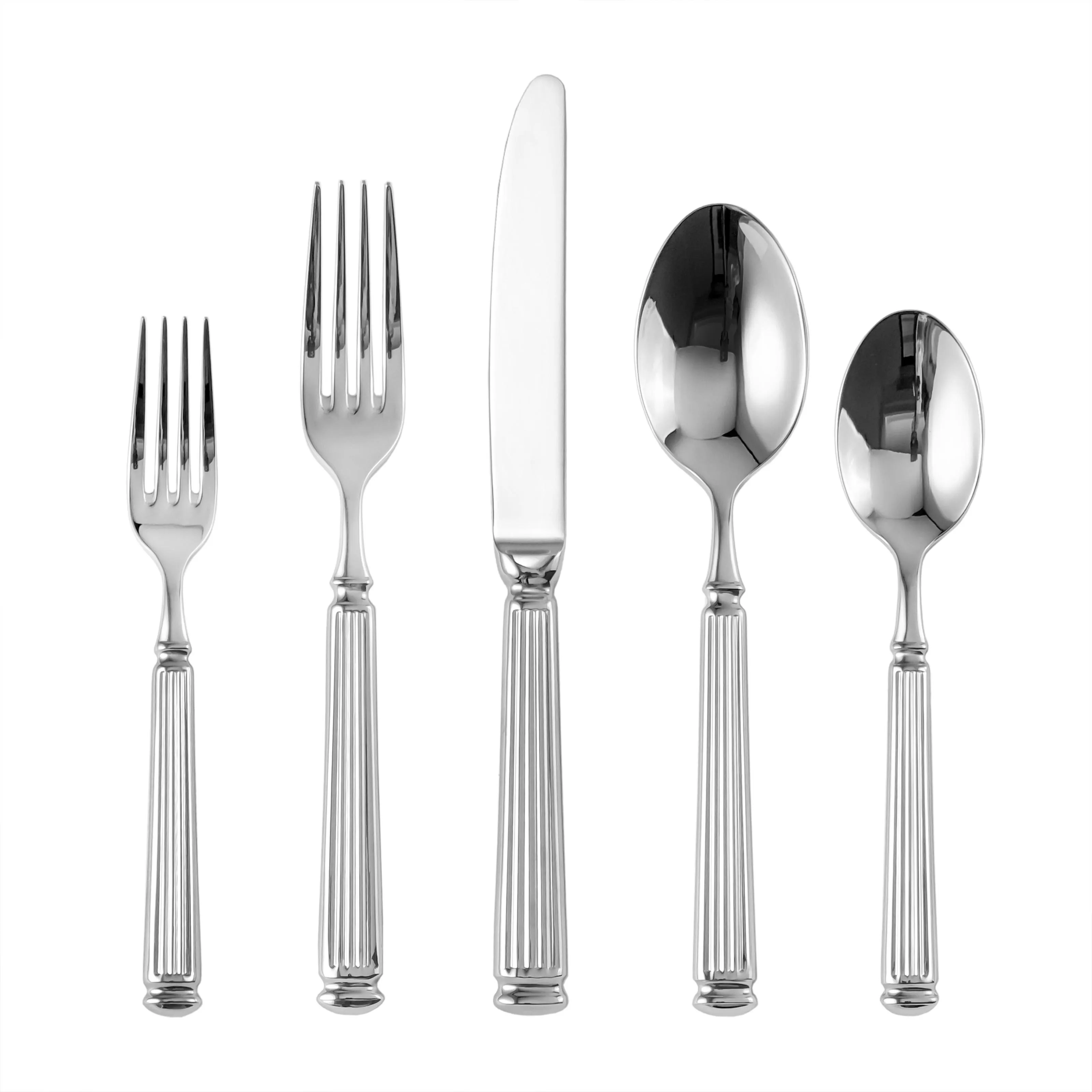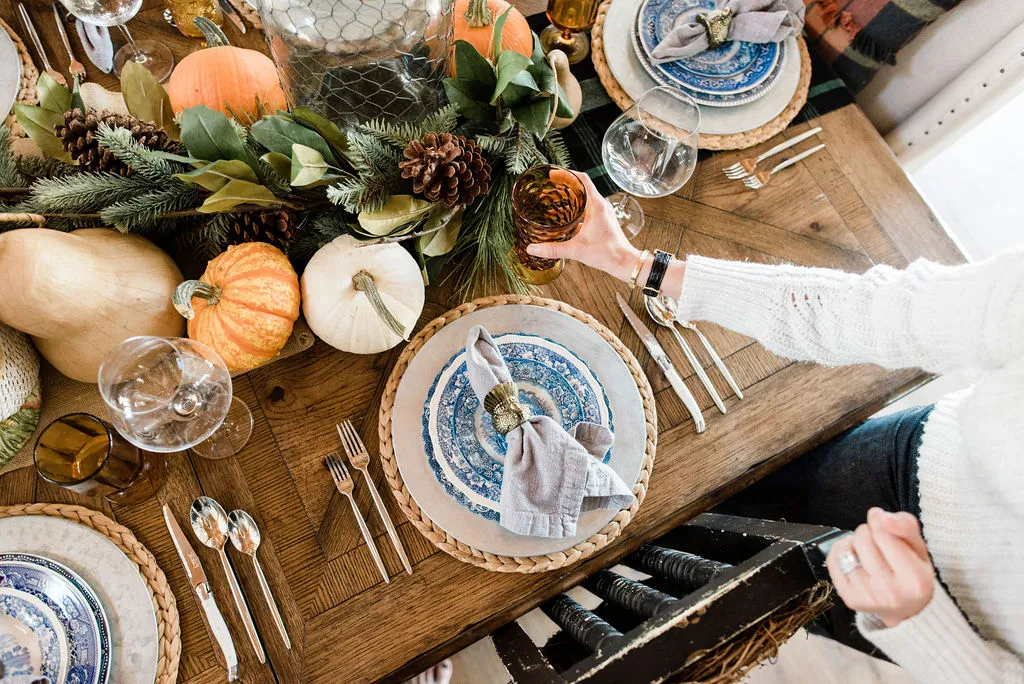
Proper place setting goes beyond the placement of your silverware sets. It is an art form that silently speaks volumes, offering welcome, consideration, and thoughtful attention to your guests.
This guide serves as your ultimate reference, providing a deep understanding of place setting rules, from basic to advanced. We’ll explore the logic behind silverware placement and decipher how to set it up for both formal and informal occasions.
Understanding the Basic Principles: The Logic of Place Setting
Before getting to the specific steps of the place setting, it is best to understand the “why” when setting your plate, so that while learning, you can remember somehow to be more flexible for special occasions, etc. All placements of silverware are based on several key rules:
Outside-In Rule
This rule is the most basic. Guests begin with the cutlery farthest from the main plate, and move in order as each course is served, starting from the outside. For example, cutlery for the starters would go on the outer edge.
Position and Orientation Principles
- Forks: Placed to the left of the main plate, and the tines face up.
- Knives/Spoons: Placed to the right of the main plate, facing the plate itself. It is for safety reasons and also plays into the fact that most people are right-handed.
- Silverware for dessert: Can be placed horizontally above the main plate, with the fork handle facing the left (for dessert forks) and the spoon handle facing the right (for dessert spoons) or you can present with dessert.
Alignment and Spacing Principles
All silverware should be aligned at the bottoms with the edge of the table and uniformly spaced an inch apart, so that it looks neat and tidy. In addition, use placeholders to establish spacing without crowding; a distance of one-half inch should be acceptable spacing.
Understanding the Standard Silverware Place Setting: From Informal to Formal
Let’s now adapt the standard place setting concepts we have just outlined in a specific context. We will begin with an informal dinner setting, move next to a formal dinner setting, and finally move towards a formal banquet place setting.
1. Informal Dinner Setting
An informal dinner setting can be used for casual dinners (e.g. family dinner/meal with friends) and it will include a core set of eating tools that is appropriate for serving a main course and dessert.
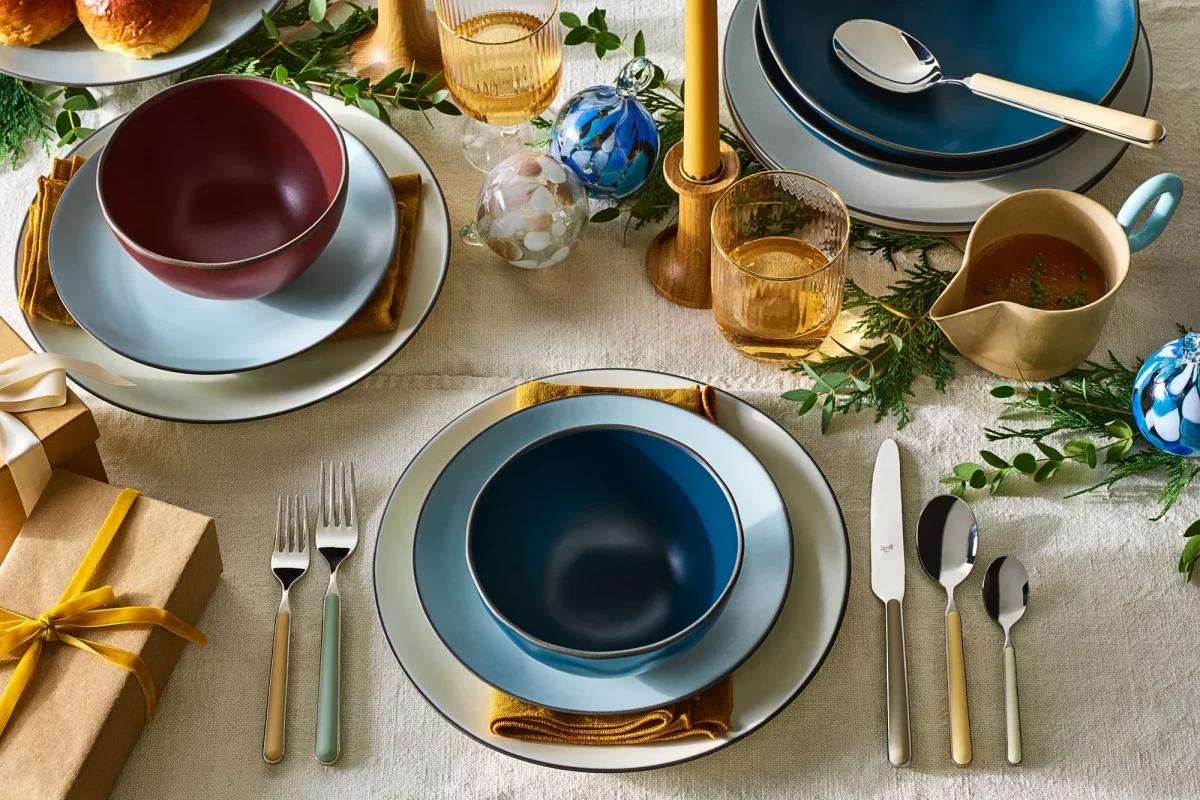
- To the left of the plate: Place the dinner fork.
- To the right of the plate: In order from the outside in:
- سكين عشاء (blade facing the dinner plate).
- Soup spoon (optional) – if soup is not being served.
- Teaspoon or a dessert spoon, also known as a dessert fork. Place to the right of the dinner knife.
- Over the plate: Horizontally placed for a dessert fork (on the bottom, handle to left) and dessert spoon (on the top, handle to the right) if all being served.
- Drinkware: Water glass to right of knife and above the dessert spoon. If desired, a wine glass can also be placed to the right of the water glass.
This is a simple dinner setting that is appropriate for providing a basic or informal dining experience known to most meals shared with family.
2. Formal Dinner Setting
The formal silverware setting is the most intricate concept of table settings, often used at weddings, state banquets, or other significant multi-course dinners. The idea may seem intimidating, but it’s really just a logical extension of the strict following of the “outside-in” principle. Formal silverware setting typically introduces dedicated silverware for each course.
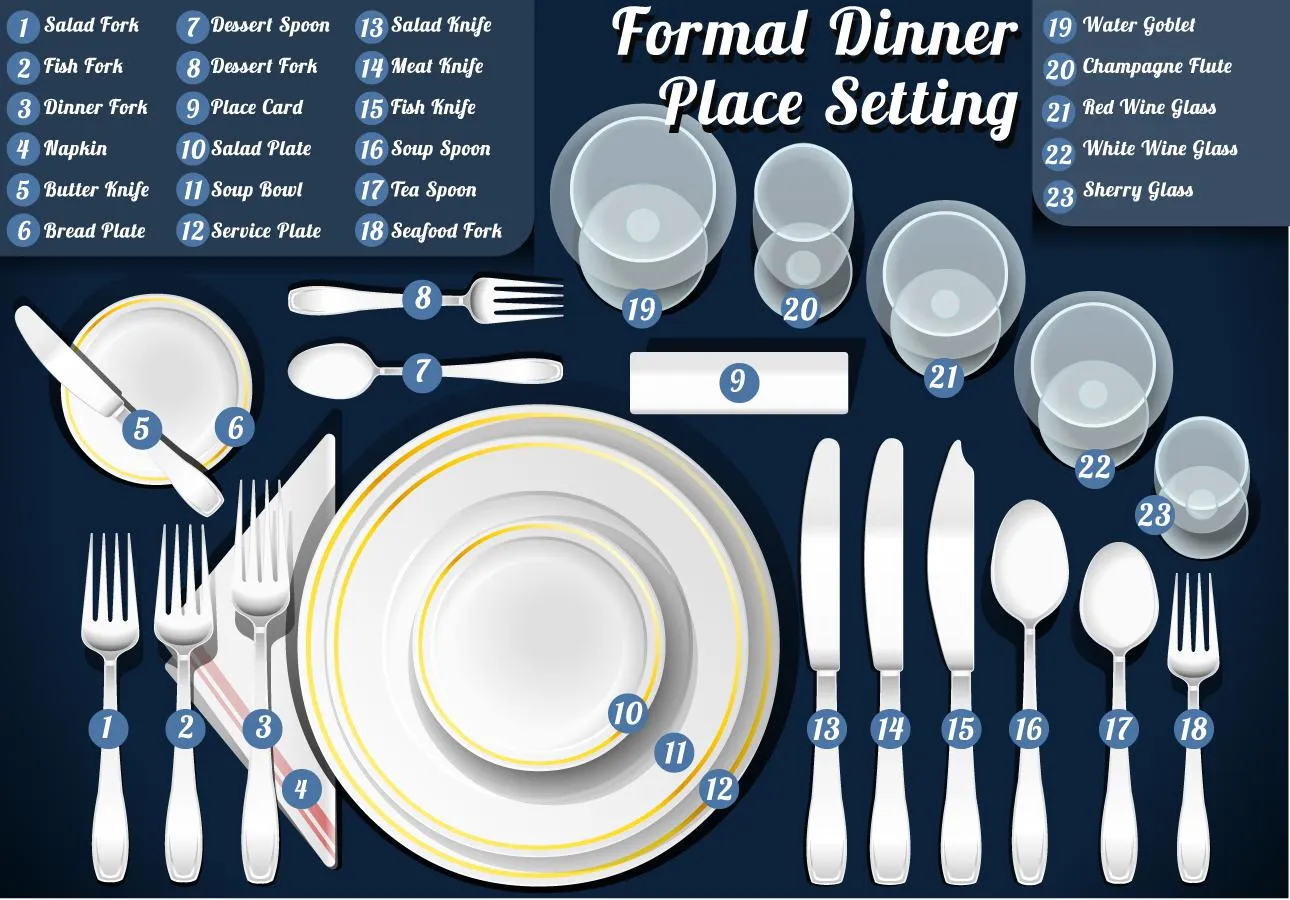
On the left side of the plate (from outside edge towards the inside edge):
- Fish Fork: Typically the outermost piece, which may or may not be slightly different in shape than the dinner fork.
- Dinner Fork: Used with the main course.
- Salad Fork: The innermost piece. Note that with European etiquette, salad will generally be served after the main course, so the salad fork would be placed on the inside of the plate – next to the dinner plate.
On the right side of the plate (from outside edge towards the inside edge):
- Soup Spoon: The outermost piece if the first course is soup.
- Fish Knife: Often has a distinctive curved knife blade, and/or the fish knife will be used with the fish fork.
- Dinner Knife: Used with the main course, blade facing the plate/food.
- Butter Knife: Served on a small bread plate – above the right part of the plate. If there isn’t a bread plate, it may not be placed on the right part of the plate.
Above the plate:
- Dessert Cutlery: If we are in a formal setting, dessert forks and spoons are placed horizontally above the plate, with the fork on the bottom (tines facing left) and the spoon on top (bowl facing right). More formally, the waitstaff will remove the cutlery and replace it with clean cutlery prior to dessert.
- Formal Glassware: Above and to the right of the plate, a set of elegant glasses are typically placed diagonally at a 45-degree angle:
- Water Goblet: Closest to the plate.
- Red Wine Glass: To the right and behind the water glass.
- White Wine Glass: To the right and behind the red wine glass.
- Champagne Flutes (if applicable): On the outer edge.
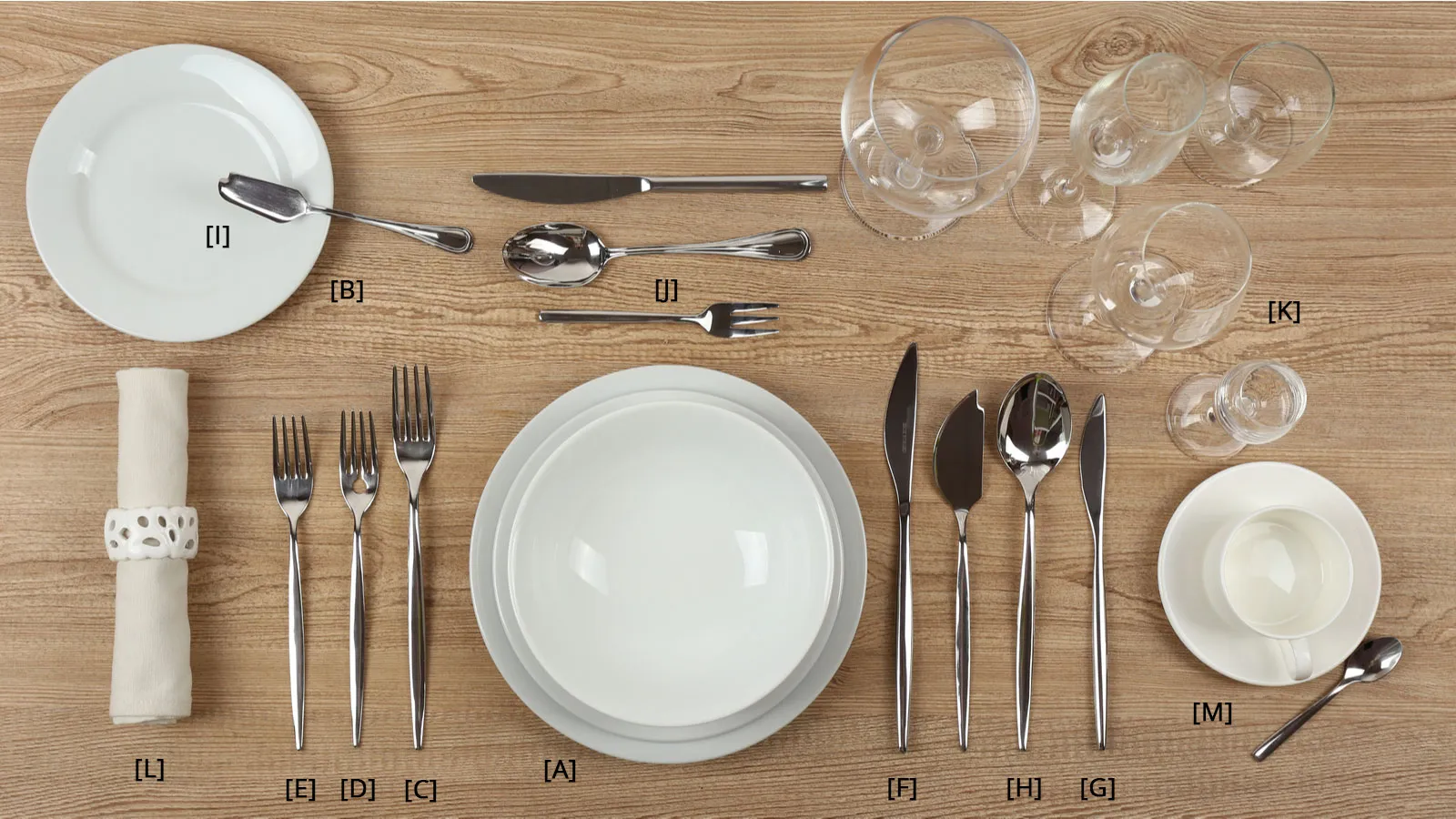
Specialty Silverware and Placement for Special Occasions
In addition to the customary silverware, certain dishes or occasions require specific types of silverware.
- Oyster Fork: If the first course is oysters or shellfish, the oyster fork is usually placed to the right of the right-most spoon, but sometimes it is just placed directly on the oyster plate. The oyster fork is the only type of fork that must be placed on the right side.
- Coffee/Teaspoon: During formal dinners, coffee cups and teaspoons are served with the coffee or tea, instead of at the beginning of the dinner. The small teaspoon should be placed on the saucer of the teacup.
- Steak Knife: If the main course is steak, a sharp steak knife is a replacement for the typical dinner knife and is positioned in the spot of the dinner knife.
Common Questions and Misconceptions
What happens if I make a mistake?
No biggie! The whole point of table manners is for your guests to feel comfortable. Guests hardly notice the slightest mistakes you might make with the table setting. Your hospitality is way more important than perfection.
What is the rule of thumb for how much silver to set out?
A good rule of thumb is only to set out tableware for the dish that is up next for your guests. If, for example, you are not serving soup, then there is no need to set out soup spoons for the meal. This will reduce clutter on the table and also communicate to your guests what the flow of the meal is.
What is the proper place of the bread plate and butter knife?
The bread plate is placed above and to the left of each place setting, parallel to the fork. The butter knife is placed horizontally on the bread plate, with the blade facing the center of the bread plate.
Where do I place the napkin?
The napkin can be placed under, or to the left of the first fork (the one next to the plate), or as a more elegant option, simply place it in the center of the plate. Your guests will enjoy the visual interest, and it is a nice focal point right when the meal begins.
Conclusion: Elegance is in the Details
Proper silverware placement is a skill worth investing in. It demonstrates your attention to detail and respect for your guests. By mastering these basic principles, you can transform any meal into a special and memorable event. Remember, the goal is to create a pleasant and comfortable experience.
So, relax, set your table with confidence, and enjoy spending time with family and friends. After all, the best silverware is that which fosters laughter and genuine conversation.
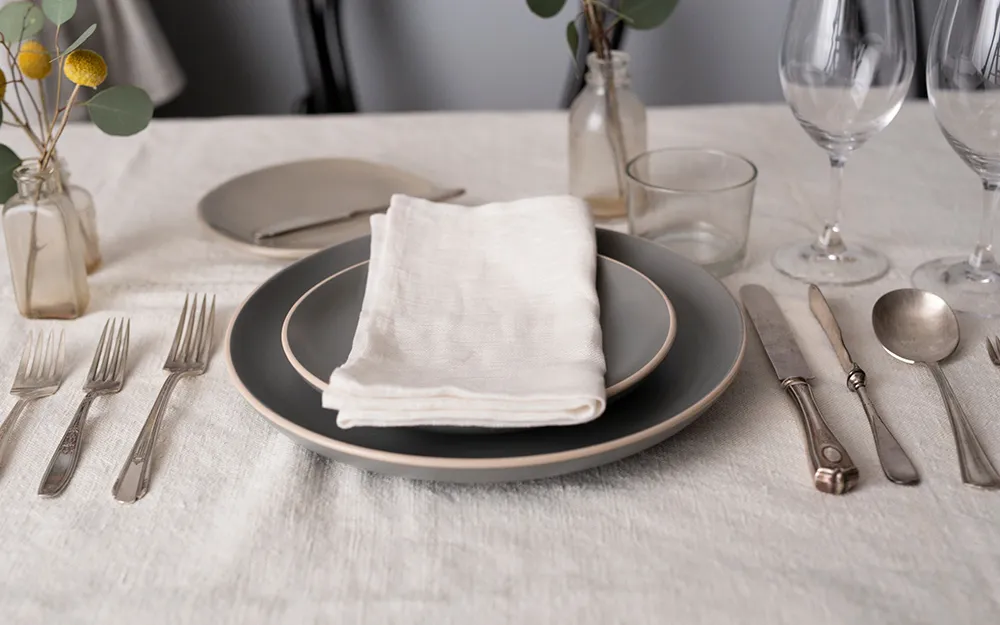
FANGYUAN: Leading Flatware Manufacturer
After it is understood how to set a table elegantly, you may be wondering where to get flatware to meet your protocol and etiquette expectations while combining quality and style of finishes. This is exactly where FANGYUAN Flatware comes in.
Founded in 2009, أدوات مائدة فانجيوان FANGYUAN is a leading manufacturer of stainless steel flatware in China, consistently ranking in the top 3. We produce, design, and wholesale supply a variety of beautiful stainless steel silverware sets, with over ten years of experience.
You will feel at ease knowing our quality is backed by many international certifications and audits, such as ISO, BSCI, SEDEX, and SCAN, along with being a verified supplier to many global retailers, including Walmart, Target, Costco, and Tesco.
When seeking an OEM silverware set supplier for your brand, أدوات مائدة فانجيوان FANGYUAN will provide you with stainless steel silverware sets that exceed your expectations.
